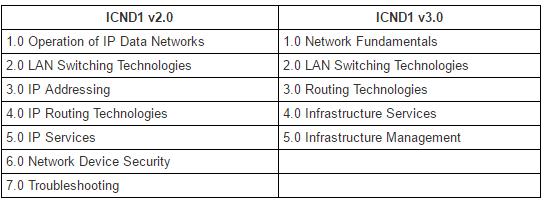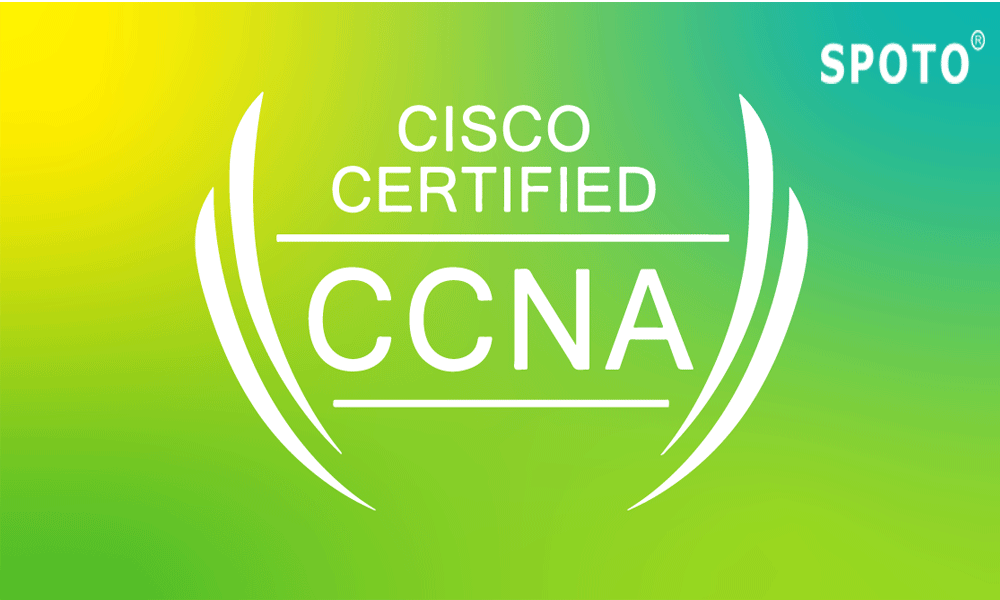Since the launch of the revised CCNA routing and switching exam, the SPOTO team has been trying to listen to your questions, doubts, and feedback on the revision. Starting with the initial publication and release of the updated blueprint, the most consistent concern is whether the updated certification is moving in the right direction of the industry.
Some candidates raised the following questions:
1. Why are there more in-depth topics, such as BGP, VPN / tunnel and IPv6 routing moving from CCNP to CCNA, especially if CCNA should be at a lower level? What used to be considered advanced technology is now common, even at the assistant level. Our certification is based on industry job role analysis, and these technologies are now the basis of CCNA level work roles.
2. Will this reduce the value of the CCNP? Absolutely not. The current CCNP Blueprint still contains a professional level of technical trends and job role expectations.
3. Why is the CCNA exam so many subjects? As shown below, we have not added other topics in the exam. Instead, we simplify the concepts and goals, remove obsolete technology, and cut basic skills.
We know that change can be difficult, but before we delve into the reasons for the implementation of these changes, let’s review the changes we have made.
THE MAJOR CHANGES
1. To obtain CCNA routing and exchange authentication, you still need to pass the ICND1 and ICND2 exams or the composite CCNA exam. However, all three tests have been modified from version 2.0 to version 3.0.
2. Interconnecting Cisco Networking Devices Part 1 (ICND1) (Exam 100-105)
Upon passing this, you will earn the Cisco Certified Entry Network Technician (CCENT) certification
3. In v2.0 of this exam, there is a separate troubleshooting domain. Although troubleshooting is no longer your own domain, the entire exam includes troubleshooting tasks and technologies by allowing candidates to demonstrate that a failure order can be resolved or upgraded, or that the final solution is validated and monitored
The blueprint domains have been updated to reflect a more streamlined approach to organizing the content as seen below:

Interconnecting Cisco Networking Devices Part 2 (ICND2) (Exam 200-105)
In this exam, we have removed obsolete technologies and added technologies that are emerging or in high demand
Below are the changes to the Exam Topics from old versus new:

Cisco Certified Network Associate (CCNA) (Exam 200-125)
You can also participate in the compound Cisco Certified Network Association (CCNA) exam to obtain CCNA routing and exchange authentication. The 200-125 exam covers all the subjects of the ICND1 and ICND2 exams.
Below are the changes to the Exam Topics from old versus new:

WHICH TECHNOLOGIES MADE THE CUT?
Below are the topics that are no longer included in the ICND1 and ICND2 exams.
The topics below that have been removed from or added to the ICND1 and ICND2 exams also apply to the composite CCNA since it comprises content from both exams.

Below are the topics that have been added to the updated versions of the ICND1 and ICND2 exams.

Certification must always develop to keep pace with changing work roles. In order to maintain relevance, we have moved away from cutting-edge and central technologies, such as frame Relay or serial WAN, but focused on more software-defined networks. This is one of the reasons why we only use RIP instead of OSPF to introduce candidates into IP routing protocols.
Similarly, it is important to stay away from Dual-Stack. Because this is the transition technology from IPv4 to IPv6, and because there are many different IPv4 to IPv6 transition technologies, this is considered to be mature and easy to understand technology. Looking ahead to new technologies and understanding the basic concepts of today’s network environment, such as QoS and cloud, is critical to preparing future network engineers. As technology changes, so must the roles that support them, as must Cisco certification.
(EPM), Cisco’s certification leader, exam project manager, and subject matter expert (SME) have developed a strong certification that covers the basic knowledge, skills, and competencies that network engineers at today’s level must have to perform their daily work effectively today's tasks. They do this based on job role analysis and compliance with test industry standards. They found that what was considered advanced technology a few years ago is now considered the foundation of today’s engineers. The revised ICND1, ICND2, and CCNA v3.0 exams are designed to cover core skills and techniques that have become current roles.
More you may be interested:
1. Should I Bail on ROUTE, SWITCH, and TSHOOT in Favor of 300-401?
2. Where I could find the CCIE Data Center Workbook?
3. Step by Step Guide -Cisco CCIE LAB Booking Process
4. Some Valuable and Free Cisco Certification Study Materials to Download

 Join Telegram Study Group ▷
Join Telegram Study Group ▷














